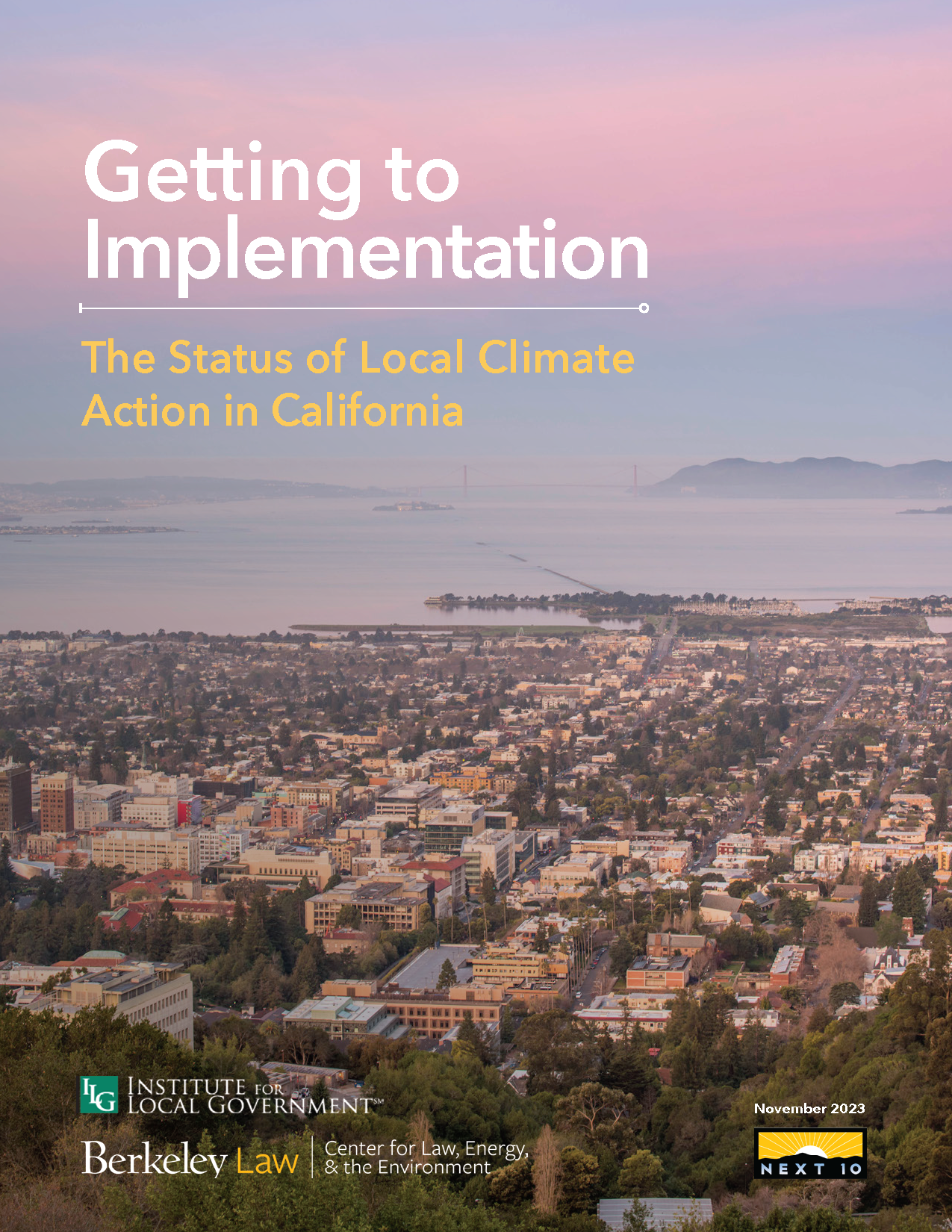November 2023
California’s local governments, which include cities, counties, and special districts, play a pivotal role in shaping the State’s transition to a decarbonized economy. However, jurisdictions across the state have varying levels of success in implementing climate policies and programs. CLEE’s new report, Getting to Implementation: The Status of Local Climate Action in California, summarizes the results of a statewide survey on local governments’ efforts to address climate change, conducted in partnership with the Institute for Local Government (ILG).
The California Local Government Climate Activity Survey, which was open from April to May 2023, gathered information on existing efforts to address climate change, opportunities for strategic climate policy and planning, and barriers to the timely implementation of climate solutions. The survey was designed to help assess the current status of climate action planning efforts and policy implementation, identify opportunities and barriers to move from planning to implementation, and increase understanding of resource constraints, barriers, and opportunities to advance action across a range of policy areas.
Over one-third of California’s cities and counties responded to the survey. Of these jurisdictions, over three-quarters have adopted or are in the process of developing a Climate Action Plan. Respondents are most active on climate policies related to Transportation, Land Use, and Energy & Buildings but express a growing interest in developing policies that support Climate Equity & Environmental Justice (EJ) priorities and policies that integrate climate risk across other planning efforts.
The report identifies nine key takeaways from local governments’ responses to the survey that provide a narrative snapshot of local climate action amongst respondents to the California Local Government Climate Activity Survey:
- Climate Action Plans Are Important, but Not Necessary, for Action
- Organization and Integration of Climate Activities Remain a Challenge
- Co-benefits are Important, Especially in Smaller and More Conservative Jurisdictions
- State Action and Investment Drive Local Action
- Increased Support is Needed for Equity and Resilience Actions
- Methane is an Opportunity for Increased Local Impact
- Tailored Funding and Capacity Needed to Overcome Barriers to Action
- Service Programs are Helpful for Adding Capacity
- Collaboratives Can be Helpful but Need to be Designed to Benefit All Partners
Over the next decade, cities and counties will benefit from significant investments from the California Climate budget, the Infrastructure Investment and Jobs Act, and the Inflation Reduction Act. Realizing the potential of these investments to achieve climate benefits will depend on local government readiness and willingness to advance climate solutions. The California Local Government Climate Activity Survey is a first step in providing state and local stakeholders with critical insights on how best to assist local governments in designing and implementing climate solutions that address community needs and ensure mutually beneficial outcomes for the State’s most impacted communities.
Access the report here to see all conclusions and recommendations.
The report authors want to thank Next 10 for their support and partnership on this project. To read the report on Next 10’s website, please click here. To read Next 10’s press release for the report, please click here.
Contact Hanna Payne (hanna.payne@berkeley.edu) or Louise Bedsworth (louise.bedsworth@berkeley.edu) for more information.
